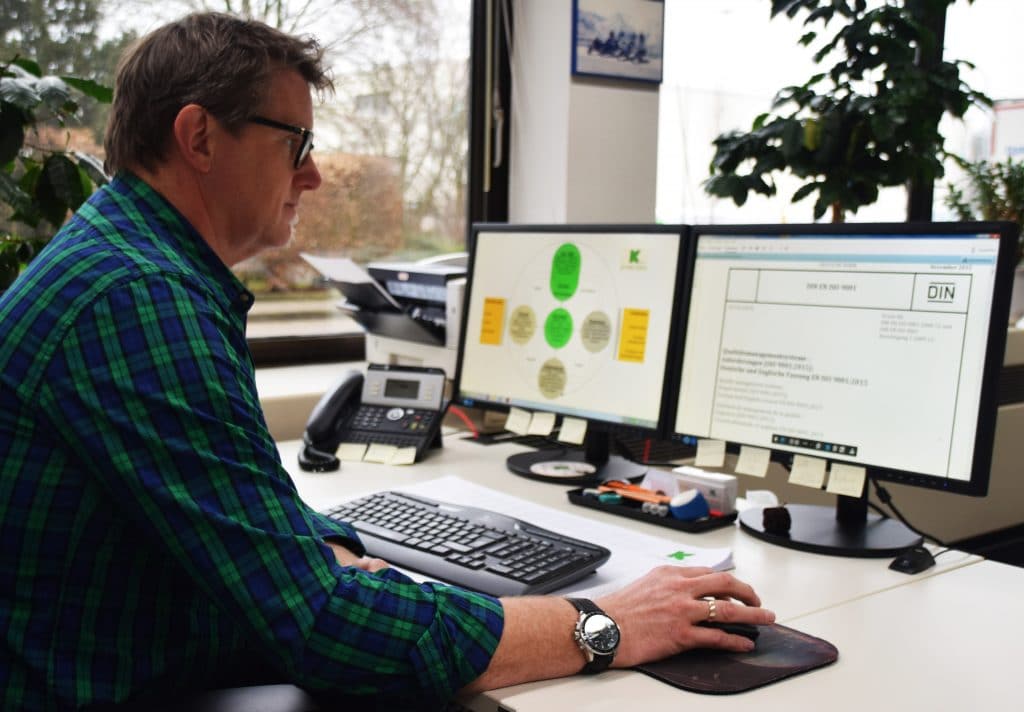ISO 9001 and 14001 – latest version now adopted (2)
Environmental management system undergoes successful changeover
15 September 2018 is the changeover deadline for businesses with regard to certification of their environmental management systems. By then, the latest version of the ISO 14001 standard – entitled ISO 14001:2015 – needs to have been integrated into these systems. Klasmann-Deilmann has already taken this step.
The ISO 14001 international environmental management standard lays down globally recognised requirements for an environmental management system (EMS). An improvement process that forms an important basis for this standard draws on the PDCA method (Plan – Do – Check – Act).
A new addition to the 2015 version is assessment of ‘context’. Now, stronger strategic demands are placed on companies, and they must take into consideration both current and future questions relating to environmental aspects and business performance, provided these questions are relevant to the company in ecological terms. Instead of working through a rigid list of criteria, businesses are responsible for identifying environmentally related issues – specified both internally and externally – and for determining (for themselves) which of these are relevant to the company.
The new version also includes risk identification; there is now a greater focus on pinpointing risks and opportunities in relation to environmental aspects. This means that companies must take the initiative more with regard to their EMS. Top management’s accountability for the EMS is stressed: under the 2015 version, requirements placed on the system must be integrated into business processes. In this way, there will be closer interaction between corporate governance and environmental protection.
An improvement in environmental performance has always been an objective of the ISO 14001 standard. Previously, the idea was to achieve this by avoiding environmental impacts. The standard now goes further and commits companies to active environmental protection. Additionally, performance assessment is now more rigorous, requiring the use of key performance indicators.
Since 2012, Klasmann-Deilmann has published an annual Sustainability Report. We are therefore well prepared for the now mandatory adoption of ‘life cycle thinking’ in connection with the EMS. Environmental aspects and related environmental impacts of companies’ activities, products and services must be identified, taking life cycles into account. However, a formal, detailed Life Cycle Assessment is not required. Klasmann-Deilmann’s focus is on CO2 emissions, which have since 2014 already been transparently disclosed in a climate footprint. We are currently preparing the fourth such footprint.
The global approach adopted and advances in communications media result in extended requirements for both internal and external communication. Here, too, businesses are given greater autonomy: they have to decide for themselves the ‘who, when and how’ of their communication activities.
Follow this link to the first part of our series: ISO 9001.
